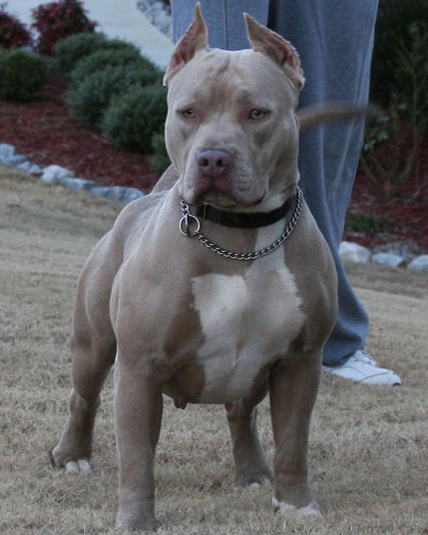Why
is it that some breeds just attract certain types of people? Labs attract families, border collies attract
people who want something fancy and pit bulls attract people who want to appear
tough. I know stereotypes have a
role to play, but pit bulls always seem to get the worst of it. There are many perspectives on pit
bulls; many large cities have bans against them. They have been shown in temperament studies to be more
aggressive towards other dogs and fiercely protective of their owners. In a shelter environment, we call this,
“highly reactive.” They seemingly
have a high prey drive, but then so again do Huskies
and German Shepherds. Still, at
the humane society it is the pit bull that draws the most irresponsible people. When every a pit bull goes up for
adoption, we at the front desk dread the visits. We try and explain their personality. With Pits, you have to be the dominant one.
You must give them direction and obedience training, otherwise you will
have an uncontrollable dog with triggers for aggression that you do not understand. This combination of bad owners and raw
disposition breeds unpredictability; which by in large, makes a community
unsafe. Since cities cannot force
people to train their dogs or assert themselves, your only real option left is
restrict the breed itself. A dog bred to bait bears and later for
dog fighting needs good people. A
pit bull from a humane society is like a foster child straight
out of juvie that craves structure.
It is not the dogs themselves that are the problem but rather years of unregulated
breeding and rotten owners that have created a breed in a state of chaos.
 |
| An Example of a Blue Pit |
Several
examples come to mind when I speak of pit bulls. The first was a beautiful blue pit bull by the name of
Norman. He was a pure bred pit, rippling
with muscles. His ears stood erect
alert at everything he heard. His
gaze was fixed, focused, and ready to be told what to do. As one coworker put it, “He was a
beast.”
When
he was put up for adoption, he went through the normal process. After a week, he found someone who
adored him. He thought Norman was
an amazing creature that he must have.
He adopted him on the spot not giving it a second thought. Two days later, Norman came back. His new wonderful owner had taken him
over to a friend’s place to visit.
The friend had a cat. Norman started out friendly enough, playing with the cat,
mouthing it gently. Then the cat ran,
stirring up in Norman his prey drive.
Chasing after the cat, he grabbed hold and shook until the cat no longer
moved.
Bad
owners cause violent situations.
Didn’t this person ever hear of the stories as a child of the dog who
chased the cat? True cats and dogs
can be great friends, but some dogs simply see them as something to run after. No different then a squirrel. Who brings a dog they have not trained
yet over to a friend’s house that has a cat and just allows them to interact? Before that dog went anywhere with other
animals, his owner should of taught him how to “leave it” and know that he
could break his dog’s prey drive.
My
second example is a poor dog by the name of Henry. Henry also was a magnificent pit bull. He stood tall, his red and white coat
glistening. He got adopted to a
hippy lady who, following the ways of Caesar, wanted to create a “pack”. She already had two tiny Chihuahuas whom she had spent a great deal of time training. On Henry’s paperwork we put a waiver
on him stating that he had a high prey drive, meaning that something like a Chihuahua
he might find amusing to chase. This
particular woman did not care. As
she put it, she “Trusted in her own ability to train this dog.” Granted, mind you, a Chihuahua is not a
pit bull. A month later,
Henry came back. He had attacked
one of the dogs in the home and had fought with three others at the dog
park. Again, where was the training? Maybe this lady trusted in herself, but
that did not give her the right to trust in a dog she barely knew.
In
both cases, the dogs were put down. Heartbreaking.
But the right owner, a good owner for a pit is one in a million. Good owners create fantastic dogs. But if the people who are looking after
you can’t even control their own lives, how can they give you guidance? There are many controversies surrounding
pits, but for my own opinion, it is hard for me to not stand by a dog instead of
a person who really simply doesn’t have a clue.
Emily, what a great post. I'm glad you talk about this, because as you know we have a pit and used to have another one. People don't understand what it means to have a pit bull and are horrified when I mention that we had two, thinking they are only bloodthirsty savages. You're right, it takes a good deal of training to have a stable pit in your home (my dad does spoil our current pit a little too much, in my opinion) but our pit bulls have been the sweetest, gentlest, most loving dogs we've ever had. I will always have a soft spot for pit bulls.
ReplyDeleteThank you for the comment! It is a very difficult subject. It seems like people either like pits or they hate them. There is no middle ground. But they can be great dogs under the right guidance.
ReplyDelete